SULMAAN WASIF KHAN



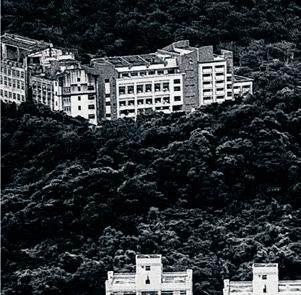







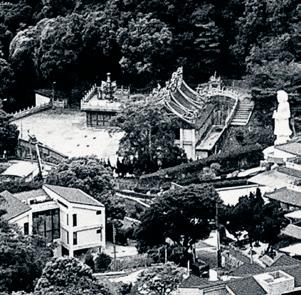

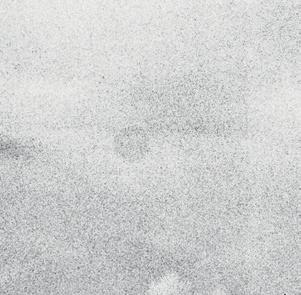
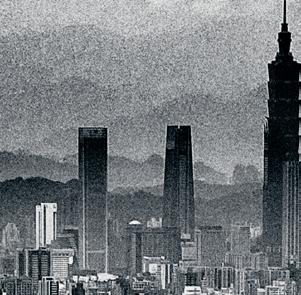


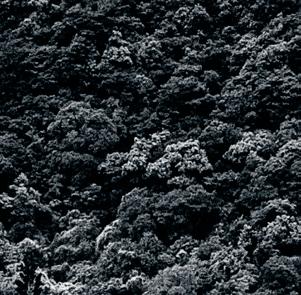


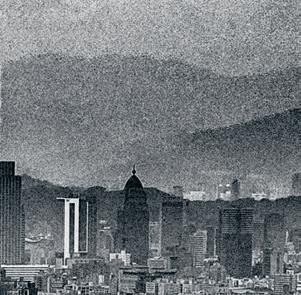
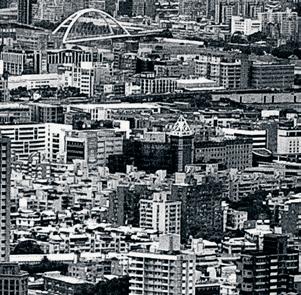






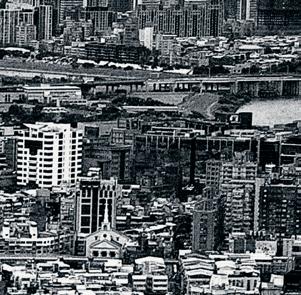

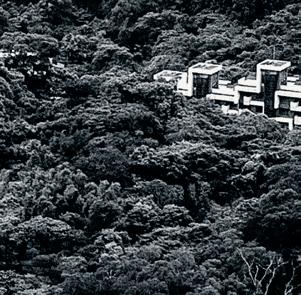










































LANE an imprint of
Sulmaan ALLENUK | USA | Canada | Ireland | Australia
India | New Zealand | South Africa
Penguin Books is part of the Penguin Random House group of companies whose addresses can be found at global.penguinrandomhouse.com.
First published in the United States of America by Basic Books 2024 First published in Great Britain by Allen Lane 2024 001
Copyright © Sulmaan Wasif Khan, 2024
Maps by Kelly Sandefer, Beehive Mapping
The moral rights of the author and map designer have been asserted Printed and bound in Great Britain by Clays Ltd, Elcograf S.p.A.
The authorized representative in the EEA is Penguin Random House Ireland, Morrison Chambers, 32 Nassau Street, Dublin D02 YH68
A CIP catalogue record for this book is available from the British Library
ISBN: 978–0–241–67485–7
www.greenpenguin.co.uk
Penguin Random Hous e is committed to a sustainable future for our business , our readers and our planet. is book is made from Forest Stewardship Council® certified paper




Beijing
China
Shanghai

Fuzhou



Russian Federation



Sea of Okhotsk


Sea of Japan East China Sea
Taipei
North Korea
Seoul
Hong Kong

South China Sea
Manila

Tokyo

Japan
South Korea

Taiwan



Philippine Sea

Philippines

Northern Mariana Islands

Guam (US) (US)



Indonesia









Anchorage
Bering Sea Gulf of Alaska



Aleutian Islands (US)





Honolulu

Hawaii




Canada


Seattle
United States
San Francisco
Los Angeles






San Diego


The North Pacific
China, Taiwan, and the United States


In the spring and summer of 2022, a new trend swept American policymakers: visits to Taiwan. Strictly speaking, it was a once and possibly future policymaker who started it; news broke that Mike Pompeo, who had served as Trump’s secretary of state, would arrive in Taipei in March and meet with Taiwan’s president, Tsai Ing-wen. e Biden administration suddenly announced that a team of former defense o cials—headed by no less a gure than the former chairman of the Joint Chiefs of Sta Mike Mullen—would be heading to Taiwan too. e delegation arrived just before Pompeo. Mullen, characteristically prudent, spoke of how his delegation, with its mix of Democrat and Republican o cials, showcased “the bipartisan nature of support for the United States’ strong partnership with Taiwan.” As statements of support for Taiwan went, this was quite signi cant, not least because of the gure delivering it. But it would pale in comparison to the Pompeo show three days later. Newly slimmed down, Pompeo wore a mask in deference to Taiwan’s Covid-19 regulations—and his mask sported the ags of the United States and the Republic of China (ROC, which remains, to this day, Taiwan’s o cial name). “ e moment,” he declared in an interview




East China Sea



Penghu Is.


South China
Sea



Keelung

Hsinchu

Douliu
Taichung
Yuanlin Nantou


Taoyuan Kaohsiung
Taipei


Hualien

C hu ngy ang Rang e

Taitung






 Orchid I.
Green I.
Orchid I.
Green I.
with the Taipei Times, “calls for clarity, transparency and a deep recognition of the central idea that we’ve all known: that Taiwan is not a part of China.”1
e People’s Republic of China (PRC), which had long held that Taiwan was a part of China, was predictably annoyed. But it was with the announcement that Nancy Pelosi had decided to visit Taiwan that Chinese ire came to the boiling point. Pelosi had a long and distinguished track record as a China hawk. She had reveled in unfurling a banner at Tiananmen Square to honor the protesters Beijing had mowed down there in 1989, and now she was set on going to Taiwan to show her support. And to make matters all the more galling, Pelosi was Speaker of the House, third in line for the American presidency. e status mattered. reats of retaliation burst forth. Hu Xijin, the editor of the nationalistic Chinese tabloid Global Times, called for Pelosi’s plane to be shot down. ( is was unusual: In general, Beijing has been fairly good at keeping propaganda under control. One could threaten, but only within limits; the notion of taking a plane down was taking things too far. It suggested that somehow, somewhere, the governance machine in China was not working quite as it should.) e Biden administration announced that the American military was opposed to the Pelosi trip. None of this stopped Pelosi. She landed in Taipei to rapturous applause and Taiwanese hailing her as the “Celestial Mother of the Western Skies.” One enterprising Taiwanese politician celebrated her arrival by treating citizens to “Democracy Fried Chicken.”2
e PRC did what it always does when most annoyed with Taiwan: it started o another round of military exercises and launched missiles across the Taiwan Strait. And the missiles had the same e ect they always have on Taiwan’s behavior: they sharpened its
resolve. Taiwan’s authorities announced that they would hold drills of their own and that they were prepared to weather the storm. Nor did the missiles (which landed in the waters surrounding the island) prove e ective at stemming the tide of American o cials who suddenly decided that they, too, had to visit Taipei. South Carolina senator Lindsey Graham had already led a delegation of senators; now came the energetic Ed Markey of Massachusetts. Eric Holcomb of Indiana made sure that state governors were represented. Pompeo returned.3 One began to wonder how President Tsai could possibly nd time to govern while catering to the endless ood of visitors.
A historian watching the situation from afar could not help being struck by the odd mix of mendacity, amnesia, and half-truths on display. ere was Beijing insisting falsely, if consistently, that Taiwan—about a hundred miles o China’s coast—had always been part of China. e Americans, for their part, talked of how democracy was a common bond between the United States and Taiwan. is was true as far as it went, but it glided over the bit where America had propped up a dictator in Taiwan, whose legacy of oppression and torture haunts Taiwanese to this day. Even the name Pompeo used for Taiwan—“Republic of China”—missed the fact that many of the Taiwanese he claimed to be supporting had deeply ambivalent feelings about that name. e ROC, a er all, had been a Chinese regime that had imposed rule on Taiwan by force, and had laid claim to all of China, including the large chunk of it across the strait. Taiwan, with its ourishing democracy, was di erent, its own entity; many Taiwanese thought it was time to change their country’s name. Tsai, meanwhile, whose almost painfully bland demeanor concealed the sharpest brain among the leadership of the three countries, did not bother to o er corrections. She simply thanked America for its






China, Taiwan, and the Offshore Islands
Zhejiang
Wenzhou

Dachen I.
East China Sea
Fujian




Quanzhou

Fuzhou

Nanri I.
Jinmen I.
Little
Jinmen I.

Is.
Penghu Is.
South China Sea


Taichung
Tainan


Taipei
Senkaku/ Diaoyu Is.

Green I.
Kaohsiung




Philippines



support in suitably attering terms and proceeded with her attempts to get her country on a more secure footing.
Getting the past right matters. Without understanding a country’s past experiences—its traumas, the precepts it forged in victory and in su ering, the deep convictions that life has le it with—one cannot understand its present. A failure to understand the American role in Chiang Kai-shek’s survival, to take a simple example, means that one will fail to grasp the resentment Taiwanese feel toward the United States to this day. Absent a knowledge of US-China negotiations in the seventies, one cannot grasp the full depth of Beijing’s conviction that America’s current policy is a betrayal. Our predicament did not emerge in a vacuum. It needs to be set in context if we are to address it properly.
To understand how dangerous this predicament has become, consider an incident that occurred on June 3, 2023. An American destroyer was conducting a transit through the Taiwan Strait. e United States sends ships there to make clear that it considers these to be international waters; China, by contrast, claims the area belongs to the PRC. e American destroyer was on its course when a Chinese warship crossed its bow. e crossing was dangerously close. A collision was avoided only because the American ship decelerated in time.4 Had the vessels collided, tempers would have frayed and shots might have been red—at which point, the situation could have escalated to general con ict.
In another time, Washington and Beijing would have been able to dial the tension down. But June 2023 belongs to a di erent age—one in which anger and distrust have built up to the point where even the shrewdest diplomats would have had a hard time calming tempers a er an initial military engagement. e United States has come to
see China as an almost mortal foe, the power that, in the words of US secretary of state Antony Blinken, poses the “most serious long-term challenge to the international order.” American president Joe Biden has repeatedly vowed that the United States will defend Taiwan against China if it has to. China’s president Xi Jinping, meanwhile, sees the United States as leading the West in an attempt to hem China in. Taiwan, to Xi, is indisputably part of China—and like Chinese leaders before him, he has made clear that he reserves the right to use force to take it.5 Had the Chinese and American ships collided, the full weight of all that accumulated mutual suspicion would have compelled both Biden and Xi to accuse one another of reckless aggression. Demands for compensation and retaliation would have surged in both countries. With a few bad decisions, this would have been the opening salvo in a Sino-American war.
It did not happen in June. But it could have happened then—and with more warships and aircra in the area, it could happen in the future. Both sides have backed their rhetoric with increased military activity. Chinese aircra regularly breach Taiwan’s air defense identi cation zone. American ships have continued their passages through the Taiwan Strait. Even absent an accident at sea, China’s determination to take Taiwan, Taiwan’s determination to maintain its de facto independence, and America’s determination to stand up to China have consigned us to perpetual danger.
It is tempting to believe that the path out of that danger is deterrence. Deterrence worked for decades, the story goes, in keeping China and America at peace and Taiwan blissfully independent. Both the US Defense Department and Taiwan’s vice president, Lai Ching-te, have espoused their belief in peace through deterrence.6 A closer look at the past, however, shows that deterrence did not work
in isolation. At key moments—notably in 1954–1955 and 1958—luck, more than deterrence, prevented a con ict that could have gone nuclear. In 1995–1996, luck again played a larger role, and then it was strengthened by the genuine belief in Washington and Beijing that the two countries had an interest in getting along with one another, an interest larger than Taiwan’s fate. at belief is absent now. And yet deterrence continues to be invoked as a panacea, with little attention paid to the context in which it is being pursued. e leader who places faith in deterrence based on a past incompletely remembered is not unlike the speeding driver who believes that skill guaranteed a safe journey, when it might have had little to do with the drive’s safe conclusion. If our driver were to decide that speed can be maintained or even upped for the next trip, all might be well. But throw in a pothole at the wrong moment, or brakes that have been worn and are slow to respond, or another driver dri ing suddenly into the speedster’s lane, and what should have been a triumph of speed ends in con agration. A full understanding of the triangular relationship between America, China, and Taiwan is needed if we are to avoid catastrophe.
is book, therefore, seeks to provide a comprehensive account of that relationship over the last eight decades. e story begins in 1943, when the Cairo Declaration rst held forth the idea that Taiwan would be part of a Chinese state; it ends with the elections in a democratic, practically independent Taiwan in 2024. I could not have attempted such a survey without the excellent work that others have done on various aspects of those relations, though I have also bene ted from primary sources from all three sides.7 ere are, to be sure, inevitable gaps in the record. But there is enough material around to guide us along the paths that brought the three countries
to their present moment—and thereby, perhaps, to show where they might go in the future.
Remarkably, confusion has played the starring role in this tale so far. Grand strategy or even planning has had astonishingly little to do with PRC and US policies toward Taiwan. Much has been made of China’s plan to break past the rst island chain (stretching from Japan to the South China Sea, blocking China’s access to the wider Paci c) or of America’s plan to maintain primacy in the world. In China, the policy—such as it has been—seems to have been born of a paroxysm of wounded pride, the kind of hurt insistence that has dragged on so long, so loudly, that its original cause and any purpose it might serve have been utterly forgotten. American decisions, taken in the heat of the moment, have accreted over time into commitments that leaders had once sought to avoid. e United States now seems to see Taiwan as a means of “getting tough” on China. What it hopes to accomplish by getting tough, never mind the cost toughness might entail, remains unde ned. For two countries that regularly accuse one another of Machiavellian cunning, the great powers have, on this point, proven singularly devoid of purpose. Only in Taiwan can one see careful, consistent, if sometimes risky, planning—particularly a er 1971, when Chiang Kai-shek’s fantasy of taking back mainland China gave way to the delicate dance of surviving with the PRC o one coast and a distant, temperamental United States o the other. Great powers can a ord a pique, a strategic dri , that a small island clawing for survival cannot.
Striking, too, is the absence of inevitability in the whole tale. ere was nothing inevitable about Taiwan being turned over to Chiang Kai-shek’s Republic of China; indeed, there were several points where the possibility of independence for the island
glimmered temptingly. Nor was it inevitable that the United States would support Chiang once he lost the Chinese Civil War to the Communists and ed to Taiwan; American policy, until the Korean War came along, had been to let events take their course. And but for the eccentricities of American politics, the Sino-American rapprochement in 1971 might well have led to Taiwan becoming part of the PRC. at Taiwan would then democratize, that Beijing would invariably alienate Taipei, that Taiwanese democracy would take the stance toward the PRC it took: all these developments were the product of decisions that could have gone several di erent ways—just as the choices we make today could lead us to several di erent futures. Even as it charts what happened, therefore, this book lingers over paths untaken. And those paths begin in Cairo.
1943 to 1953
They sat before a phalanx of cameras. Center stage was US president Franklin Delano Roosevelt, eyes hollow, face shi ing from grave purpose to sudden levity, turning, every now and then, to exchange a word with his sta . To FDR’s le , Winston Churchill displayed the wry resignation of a man who would rather be anywhere else but who would make the best of the situation fate had forced upon him. e British prime minister did not share FDR’s obsession with the importance of China, but Britain’s hopes for victory in World War II rested on American money—and both men knew it. So Churchill removed his hat, chatted with Madame Chiang Kai-shek, and nally pu ed on the inevitable cigar.1
It was the man to FDR’s right who caught the eye. Of all three men, it was he who most forcefully conveyed the image of a warrior. Trim, ramrod straight, impeccable in his uniform, every inch a soldier. Only two things marred Generalissimo Chiang Kai-shek’s stern martial bearing: the y that kept landing on his right cheek and the slight smile that every now and then forced its way across his lips.
Chiang had reason to smile. Here in Cairo, he was meeting FDR and Churchill for the rst time. At least ostensibly, he was their equal. As leader of the Republic of China, he had been admitted as one of the “three great allies” doing battle against Germany and Japan in World War II. Best of all, the Cairo Declaration of November 26, 1943, that emerged from this meeting promised Chiang the return of territories that Japan had wrested from China:
e three great Allies are ghting this war to restrain and punish the aggression of Japan. ey covet no gain for themselves and have no thought of territorial expansion. It is their purpose that Japan, shall be stripped of all the islands in the Paci c which she has seized or occupied since the beginning of the rst World War in 1914, and that all the territories Japan has stolen from the Chinese, such as Manchuria, Formosa, and the Pescadores, shall be restored to the Republic of China. Japan will also be expelled from all other territories which she has taken by violence and greed.2
is was quite a list of territories that the ROC was to get back. e losses dated not just to World War I, as the declaration mentioned, but to 1895, when China, defeated in war, was forced to cede
Taiwan (Formosa) and the Pescadores to Japan. To be promised all this at the end of the war was a coup for the generalissimo. It would not quite work out that way. America never fully understood what it was getting into when it allied with Chiang; the US government would nd itself shocked by the commitments it was dragged into. Chiang, for his part, was triumphant in World War II, only to lose China to the Chinese Communist Party (CCP). He was le with the consolation of having reclaimed Taiwan even as the Taiwanese populace turned against him. He would be able to hold on to it only because of the Korean War and the confusion about China that would remain the hallmark of American policy. (
ere was one crucial point the Cairo Declaration fudged: the entity that had lost Taiwan to Japan was not Chiang’s China. From 1644 to 1911, China had been ruled by the Qing Empire. e empire had been formed by Manchus who had come pouring down from Manchuria (which also had not been part of China; it took the Qing to weave the region into the empire), defeated the Ming dynasty, and, bit by bit, conquered not just the former Ming territories but vast swaths of Central Asia. It was only in 1683 that the Qing seized Taiwan. Until the Qing era, it is worth emphasizing, the island had not belonged to China; indeed, its very existence did not register with most Chinese. It was populated mostly by aboriginals of Austronesian descent, and the few eccentrics from China who did take note of it seem to have been struck most of all by how di erent it was from China. e Ming-era traveler Chen Di, who made it to Taiwan in 1603, called the islanders “Eastern barbarians” and went so far as
to mourn their interaction with Chinese traders: “Since they have come into communication with China they have developed some desires. . . . I am afraid their pure simplicity is becoming more and more corrupted.”3
To the outside world, the island was a way station along the maritime corridors connecting East and Southeast Asia, a place where pirates, shermen, and traders would stop before sailing on. ere had been a small population of Chinese there, but they were far outnumbered by the aboriginals. Only with the arrival of the Dutch and their need for labor would the Chinese population grow. In 1661, a er engaging in a series of pitched battles with Qing forces, Zheng Chenggong—pirate, dreamer, warlord, and self-proclaimed Ming loyalist—decamped to Taiwan, where he defeated the Dutch forces and ousted them from the island. Zheng died in 1662, but his successors kept harassing the Chinese coast. When the ree Feudatories rebellion challenged Qing rule in China between 1673 and 1681, the forces on Taiwan gave it their support. e Qing took this enemy seriously and—aided by an erstwhile rival, Shi Lang, who had switched sides to join them— nally conquered the island in 1683.4
Conquering the forces on the island did not necessitate keeping it. e object of this campaign had been to defeat an enemy; with that accomplished, it was not clear that the expense of fortifying the island was necessary. e question caused considerable debate in the Qing court. Only the argument that someone else would take it if the Qing did not moved the emperor, Kangxi, to keep Taiwan. Kangxi was wary of the European maritime presence in the region. e idea of a potentially hostile power o shore was not one he would countenance. Taiwan, therefore, was incorporated into the Qing Empire. But the Qing were motivated by maritime geopolitics, not sacred history.5
Two key points emerge from this narrative. First, Taiwan had not been part of China before 1683. Second, it became—and this was by no means a given—part of the Qing Empire, not China. At its peak, that empire stretched from Taiwan to Central Asia. It included, among other possessions, present-day Mongolia and large tracts of Russia. Taiwan and China were not one state but parts of an empire forged by conquest. And the Qing were wary of letting Han Chinese migrate to Taiwan; they did not want the Chinese to have a chance of plotting rebellion. Not that migration was stopped entirely—enterprising coastal itinerants from Fujian and Guangdong made up the bulk of the Han who moved to Taiwan—but it was restricted.6 As the empire saw it, Taiwan and China were di erent, and it was best that they stayed that way. e decline and fall of an imperial dynasty can be a long, convoluted process, the product of a con uence of di erent forces. Like other rulers, the Qing were susceptible to “imperial overstretch”: the costs of holding on to those far- ung territories began to outweigh the bene ts. Meanwhile, the outside world had changed. Kangxi had been wary of Western naval power—he had judged it a major threat—but his successors had not devised a plan to deal with it. e importance of sea power would become apparent in 1842, when British forces defeated the Qing in the First Opium War. e Qing were then compelled to sign the Treaty of Nanjing, the rst of a series of “unequal treaties” in which a foreign power would barge in with gunboats, demand trade, and carve o part of China as a special enclave where its citizens could enjoy freedom from Chinese law. Americans, Germans, French, and Russians all followed suit. Rebellion broke out across the empire. e Taiping uprising, notably, would see rebels take the southern part of China before the Qing
nally managed to put the rebellion down.7 e empire’s power was clearly on the wane.
But the unkindest cut came in 1894, when Japan went to war with the Qing dynasty. At the time, few observers rated Japan’s chances against the Qing highly. But the Meiji restoration had seen Japan undertake serious military reform; its armed forces, particularly the navy, had become exemplars of modern professionalism. e defeat of the Qing forces was bewilderingly swi and devastating. e war marked Japan’s emergence as a serious military power. And like the Western powers, Japan would impose an unequal treaty on China. e Treaty of Shimonoseki concluded the war in 1895. But peace came at a cost. e treaty forced the Qing to cede Taiwan to Japan in perpetuity.8
Taiwan’s loss was just the beginning of the empire’s dismemberment. e Qing had been moving toward constitutional reform, but the very act of political change encouraged unrest. e Boxers United in Righteousness stormed the capital in 1900, seeking to oust the foreigners in what they saw as patriotic support for the government. Foreigners and the Qing government alike would turn against them and put them down. But the Qing Empire was running out of time. Revolution came in 1911. It owed its success, in part, to the broad spectrum of society it encompassed: political idealists agitating for a republican government, generals discontented with their power, local powerbrokers who felt they could do better without the Qing. But that very breadth meant that keeping China together would prove di cult. e decisive blow against the Qing had been struck not by Sun Yat-sen—who founded the Kuomintang (KMT), a political party calling for democratic governance, in 1912 and had been raising funds for revolution—but by Yuan Shikai. Yuan had
been a general in the Qing forces before defecting and demanding that the emperor abdicate. In 1912, the Qing submitted to that demand and Yuan would become president of the newly founded Republic of China.9
e republic was surprisingly swi to win international recognition. e United States, touched by Yuan’s appeals that America pray for his country, led the way in 1913. Britain and Japan followed suit. But Yuan’s dictatorial ways failed to keep the loose alliance of revolutionaries together. He would declare the Kuomintang a seditious organization; he sought to terminate the republic and found his own dynasty. In this latter attempt, he failed, but he did catalyze China’s balkanization. Provinces seceded and came under the sway of warlords, although the term “warlord” obscures the functions of sovereignty these men exercised. ey could tax citizens, sign treaties with foreign powers, and summon up armed forces to do their will. Not all the territories that had made up the vast empire agreed that they owed allegiance to the Republic of China. Tibet became functionally independent; Mongolia became a Soviet satellite, as, in a di erent way, did Xinjiang. ese were all states, just as much as the republic was.10 ere was not one China at this time, but several.
Uni cation was far from foreordained. It would be pursued most vigorously by two actors: the Kuomintang and the Chinese Communist Party, which was founded in 1921. e KMT was the rst to start integrating bits of China together. A er being branded seditionist by Yuan, the party had managed to regroup in Guangdong. Its success in taking back much of China—limited success, for even at its peak the KMT never controlled as much territory as the Qing had or as the CCP later would—owed much to Chiang Kai-shek, who emerged as Sun Yat-sen’s successor. Sun had been a skilled fundraiser, but he
was ine ectual at unifying territory. Chiang’s triumph was due to several factors. First, there was his sheer ruthlessness. He understood, in a way Sun had not, the importance of using force, and he did not mind being an authoritarian. e Chinese race, as he saw it, was superior, but this did not make the Chinese t for democracy. Chiang believed in Confucianism, in Christianity, and, above all, in his own destined rule. To this ruthlessness, he added the right connections. His marriage to Soong Mei-ling, Sun Yat-sen’s sister-in-law, brought him political capital at home and abroad. e marriage strengthened Chiang’s position within the KMT. Soong Mei-ling was a shrewd diplomat herself, popular in America. So, too, was Chiang’s new brother-in-law, T. V. Soong, who would prove adept at convincing foreigners to fund the Kuomintang’s military adventures.11
But perhaps the key source of Chiang’s success in unifying territory was the willingness of others to cooperate with him. Tired of the in ghting among various armed groups, several warlords agreed to cooperate with Chiang in getting rid of their rivals to form an integrated polity. In 1926, Chiang launched the Northern Expedition, which would bring territorial integrity to much of China. e expedition drew strength from Chiang’s military prowess, but it also owed much to the fact that he was working in concert with other forces in China. at cooperation extended, temporarily, to the Chinese Communist Party. e Soviet Union—a er much internal debate between Leon Trotsky and Joseph Stalin— encouraged a united front between the KMT and the edgling CCP. (An idealistic young man named Mao Zedong held o cial KMT positions under this united front.) But when the alliance of convenience had served its purpose, Chiang launched a savage assault
upon the Communists. He was suspicious of le -wing elements, as were many of the nanciers, industrial magnates, and ma a members who had helped him along on the path to power. e Shanghai massacre of 1927 saw the Communist rank and le, not to mention ordinary citizens, butchered by Chiang’s forces. A handful of the CCP’s members would escape, but for the time being, Chiang’s government seemed secure.12
e twisting, turning emergence of the Republic of China would make China’s claim to Taiwan a little less certain than the Cairo Declaration made it sound. A state emerging from the ruins of empire by no means has automatic claim to all the territory the empire once possessed. But what made matters all the more complicated was that even a er the Northern Expedition, much of China remained out of Chiang’s control. A rival claimant to China and its territories could emerge. ere were warlords to the west and north. Tibet remained out of reach. And above all, the Communists still survived. ey maintained that their Jiangxi soviet—the patch of territory they controlled—was a state. Chiang would squander his strength on a series of “bandit extermination” campaigns aimed at nishing the Communists once and for all. ese were almost successful; he dislodged the CCP from the Jiangxi soviet in 1934. e defeated CCP survived only by undertaking the storied Long March, trudging some six thousand miles to establish a new foothold in Yan’an.13 e Communists’ state had been dislodged from its original territory, and they had gone scurrying across China. But they still had signi cant power and were learning all the time.
at Communist forces were le alive would come back to haunt Chiang later. But there was a more immediate problem. In focusing
so heavily on the Communists, Chiang was expending strength better directed toward the larger, more sinister threat to his regime: Japan.
Seizing Taiwan in 1895 had by no means sated Japan’s appetite for control of East Asia. It had gone to war with Russia in 1904, winning the southern portion of Sakhalin Island. It had annexed Korea formally in 1910. It had worked with local Chinese warlords to exert power in the remains of the Qing Empire. In 1931, it invaded Manchuria and, by 1932, set up a puppet regime there, trotting out the deposed Qing ruler, Henry Puyi, as the Xuantong emperor of Manchukuo.14 No one was any under illusions, however, that Manchuria was anything but a Japanese colony.
In China, many were wary of where Japan would strike next. ere were those in Chiang’s forces who believed that this was no time to be ghting the CCP; it was time for China to unite against Japan. Chiang’s was a rule that had always relied on strongmen agreeing to cooperate with him. e warlords who were part of the ROC government worked with Chiang because they felt it was in their interests, but they understood force and were willing to use it against the generalissimo if they calculated it was necessary. at was what happened in 1936. Two of Chiang’s generals, Zhang Xueliang and Yang Hucheng, nally decided to kidnap Chiang to force him to come to terms with the Communists. e generalissimo was irate, but he was compelled to agree to hold o on further bandit extermination campaigns for the time being. (Not that he would forgive or forget: Zhang was later placed under house arrest and Yang would be executed.) e CCP was willing to cooperate. By 1937, the CCP (now under Mao’s leadership) and the KMT were, ostensibly, united against Japan. But the Communists—who had su ered at
Chiang’s hands before—were under no illusions that peace could be guaranteed forever.15
e coming of full- edged war with Japan in July 1937 put this fragile unity to the test. Chiang’s China, by virtue of its geographic position, bore the full brunt of the Japanese assault. Mao’s China—though it would launch guerrilla operations against the Japanese and refrain from attacking Chiang’s forces—was given time and space to regroup. Neither the CCP nor the KMT was above considering the possibility of coming to terms with Japan, the better to secure its own regime against the other. And the ease with which Japan conquered large parts of China had allowed it to set up a collaborationist government in 1940. Wang Jingwei’s regime in Nanjing governed by Japanese su erance, but it did purport to represent China.16 Chiang’s claim to sovereignty was far from impregnable. ere were, in sum, multiple states in the territory that had once belonged to the Qing—and the full extent of their claims was yet to be determined. China’s civil wars might have paused temporarily, overshadowed by World War II, but there was nothing to stop their resumption in due course. Chiang stood at Cairo as the proud claimant of lost Chinese territory. ere were Chinese who would contest that claim.
e messy politics and civil wars of contemporary China mattered not a jot to Franklin Delano Roosevelt. Nor did the checkered past that marked his own country’s dealings with China weigh on him. American traders had come thronging to the China market since 1784, when a ship called Empress of China sailed from New York to
Guangdong. e trade grew, and with it came missionaries, eager to save Chinese souls. Pro t and religion bound the United States to China.
e American government would use both diplomacy and force to protect its interests in China. e British imposition of the Treaty of Nanjing inspired the United States to follow up with the Treaty of Wangxia with the Qing in 1844, which would grant the Americans most-favored-nation status in trade with China. When the Taiping rebels waged war against the Qing from 1850 to 1864, the Americans would decide that Qing survival was in their interests. Like other foreigners, American soldiers would ght the Taiping, and guns from the American Civil War wound up circulating in China. In the scramble to exploit China, the United States was not to be le behind. It made a point of insisting on the “territorial integrity of China” when it advocated an Open Door policy in 1899 and 1900—which was a polite way of asking that the great powers who had carved China up not close their particular enclaves to traders from other great powers. When Chinese peasants, incensed by the foreigners lording over their land, marched into Beijing in 1900, the United States was one of the countries that would send troops to suppress them. In the ruthlessness with which it sought to protect its position in China, the United States was akin to other Western empires.
With that ruthlessness, there was a streak of idealism—though this would o en lead to disappointment. e indemnity the Qing court would pay for the damage from the Boxer uprising was used to bring Chinese students to the United States. But the presence of Chinese in the country fueled racism, as Americans worried endlessly about the Yellow Peril. During World War I, Washington had suggested it would support China’s demands for the restoration of